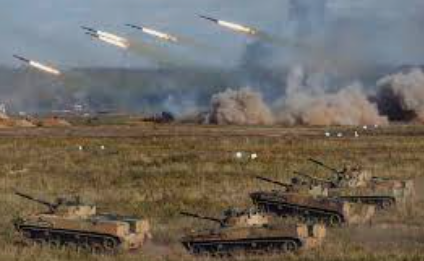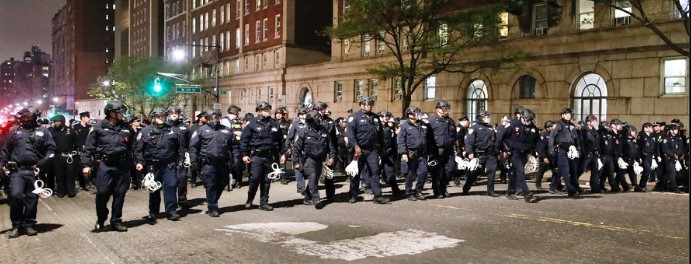By Greg Oxley, editor of La Riposte
Imperialist rivalry threatens to plunge humanity into the unspeakable horror of war, this time in Eastern Europe. The deployment near the Ukrainian border of 150,000 to 200,000 Russian soldiers, supported by all the logistics that indicate preparation for a large-scale military operation (lines of supply, fuel depots, military hospitals, etc.), raises the possibility of a war between the two countries. In addition to the human suffering and destruction that a war would bring, its economic, social and political repercussions would be very significant, in the region and beyond.
In recent years, under Obama and Trump as under Biden, the US administration has been trying to change its strategic direction. Disengaging from the Middle East, the Gulf of Arabia and Central Asia, it has also reduced its involvement in European defence, and now wants to concentrate the resources of the United States on the need to contain what it sees as China’s expansion. However, recent developments in the Russian-Ukrainian conflict show that Russia is still a major force in world affairs. The global position of US imperialism then leaves it with no choice but to maintain its role as an “international policeman”.
Yanukovych overthrown in Ukraine in 2014
In 2014, the Russian Federation took control of the Crimean Peninsula. This invasion followed the impeachment of pro-Russian Ukrainian President Victor Yanukovych, who in late 2013 effectively suspended the signing of an association agreement with the European Union, setting a significant part of the population against him. The anti-government protests that followed, known as the Euromaidan, supported and encouraged by the Western powers, resulted in the overthrow of Yanukovych and this change dealt a blow to the strategic interests of Russian imperialism.
Shortly after the invasion of Crimea, Putin announced the annexation of Crimea and the city of Sevastopol to the Russian Federation. Simultaneously, pro-Russian separatist militias, armed and financed by the Federation, began operations in the eastern Ukrainian provinces of Donetsk and Luhansk, proclaiming independent republics in April and May 2014.
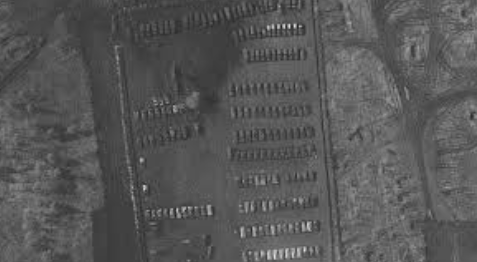
The Ukrainian government proved totally unable to resist the loss of Crimea and withdrew its own troops from the peninsula. It also failed to regain control of Donetsk and Luhansk and without being formally annexed, these republics are now de facto territories under Russian control. Sanctions against Russia by the United States and European powers, more symbolic than actually harmful, have resulted in virtually no tangible punitive consequences.
The changes in the strategic priorities of the United States, and, incidentally, the process of economic weakening and political dislocation of the European Union have increased Putin’s room for manoeuvre. The Russian regime’s strategic interests in this region make it absolutely essential for it to bring Ukraine back into its sphere of influence, and to prevent its rapprochement with the EU and NATO.
This objective necessarily involves the consolidation, and if possible, the extension of those Ukrainian territories that are under Russian control. From the point of view of US imperialism and its European allies, such a reversal of the situation would be a major strategic defeat that they want to avoid at all costs – including at the cost of war.
Russia has a formidable fighting force
The definitive resolution of this conflict through diplomacy – with the concessions on both sides that this implies – looks impossible. The military apparatus set up by the Kremlin constitutes a formidable invading force. This was not done as a joke, or to make an effect.
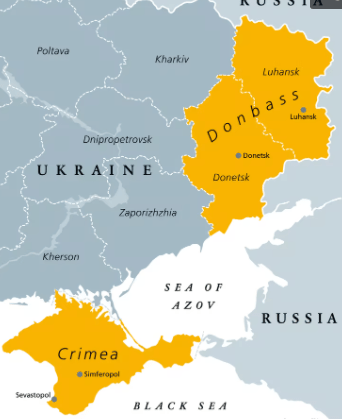
Putin could not now order a retreat without obtaining significant concessions. To do otherwise would be to lose face, especially since to ‘justify’ military preparations, he accused the Ukrainian government of perpetrating a “genocide” against the Russian-speaking population of Ukraine.
Biden, for his part, even if he excludes in advance and publicly – and to the amazement of several retired generals such as Lieutenant General Ben Hodges – the direct engagement of US armed forces, still sends weapons and important surveillance and intelligence assets, and also deploys warships in the Black Sea. The danger of a war is therefore real, even if it is not certain that it will occur immediately or in a few weeks.
In the short term, three scenarios are possible. The first, which seems unlikely to us, is that Putin will withdraw without having obtained what he could present as solid guarantees regarding NATO and the military support given to Kiev. The threat of economic sanctions will not be enough for the Kremlin to withdraw its armies. Russia also has a means of economic pressure, particularly in terms of energy resources. The Nord Stream 2 gas pipeline, linking Russia to Germany (and thus to the European Union) reduces the need to pass through Ukraine, weakening the latter’s means of retaliation and increasing Western Europe’s energy dependence on Russia.
Ukraine entry into NATO is uncertain
The second scenario would be that of diplomatic concessions on the part of the Western powers. Biden could not rule out Ukraine’s entry into NATO, even if, in truth, it is only an uncertain and distant prospect. This also applies to Ukraine’s accession to the EU. On the other hand, it is possible that there will be concessions on points of secondary importance, making it possible to avoid a war with destabilizing repercussions on the international scale that would harm the interests of the Kremlin.
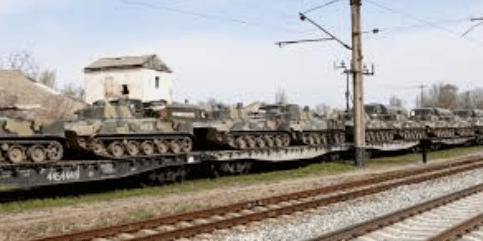
Finally, there is the possibility that Putin will launch an invasion of Ukrainian territory. Currently, everything is in place to do that. The attack could set itself relatively limited objectives. Without targeting the capital Kiev, it would be enough to carry out an incursion leading to the occupation of part of eastern Ukraine, forcing the Ukrainian army to move towards Russian forces.
In this case, the likely defeat of the Ukrainian army could force the Kiev government to rethink its position towards a rapprochement with the US, NATO and the EU. It is true that the Ukrainian armed forces are stronger today than they were in 2014. But the Russian military, too, has gained considerable firepower. NATO would not intervene to save Kiev. The “threats” supposed to deter Putin from going on the attack, whether from the United States or the European Union, are limited to economic sanctions of questionable effectiveness.
The coming weeks will tell us which of these scenarios is happening on the ground. Whatever happens, let us remember for the moment that once again, the strategic “great game” between the imperialist powers such as the United States, the European powers and Russia, are preparing to plunge the peoples in a fratricidal war. In their search for resources to plunder, markets to exploit, and sources of profit, they are ready to shed blood and sow destruction on a large scale. The workers of Russia and Ukraine have nothing to gain from organized carnage for the benefit of their exploiters and oppressors on both sides of the Russian-Ukrainian border.
Translated from an article in the French Marxist paper La Riposte. The original is here.

